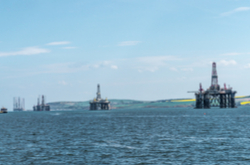Study shows oil and gas rigs could help protect corals
The wide range of industrial activities in oceans, from oil and gas extraction to renewable energy projects involving offshore wind, wave and tidal energy, can present a challenge for marine environments. By creating an ocean sprawl, the growing number of artificial structures can have a negative impact on marine ecosystems, putting further pressure on natural habitats. However, they can also present novel conservation opportunities, according to researchers partially supported by the EU-funded ATLAS project. The study findings were published recently in the ‘Scientific Reports’ journal. “Highly connected networks generally improve resilience in complex systems. We present a novel application of this paradigm and investigated the potential for anthropogenic structures in the ocean to enhance connectivity of a protected species threatened by human pressures and climate change.” As summarised in a news release by the University of Edinburgh, the scientists used a computer model to reveal how a protected species of coral might use industrial structures to spread. They found that “coral larvae released near oil platforms would travel between corals that have colonised other structures and reach natural populations located at great distances.” The news release also notes that the larvae belonging to the species Lophelia pertusa can “supplement existing populations and recolonise damaged reefs and protected areas in other countries, improving their chances of survival.” Connectivity and infrastructure In the journal article, the researchers said the study “offers the provocative suggestion that ocean infrastructure can have large-scale conservation significance to protected species. Simulations illustrated how North Sea oil and gas installations have the strong potential to form [a] highly inter-connected regional network of anthropogenic coral ecosystems capable of supplying larvae to natural populations downstream.” Quoted in the news release, co-author Dr Lea-Anne Henry highlighted the importance of understanding how the North Sea has responded to man-made structures that have been in place since the 1970s. “We need to think very carefully about the best strategies to remove these platforms, bearing in mind the key role they may now play in the North Sea ecosystem.” The ongoing ATLAS (A Trans-AtLantic Assessment and deep-water ecosystem-based Spatial management plan for Europe) project was set up to provide essential new knowledge of deep-ocean ecosystems in the North Atlantic. Research activities focus on deep-sea habitats (200-2 000 m). The partners hope the project will enable the development of science-led marine policy and regulation to ensure efficient management of ecosystems and resources. It will also contribute to the European Commission’s long-term Blue Growth Strategy to support sustainable growth in the marine and maritime sectors as a whole, as noted in a project factsheet. To achieve its objectives, ATLAS has assembled 12 cross-cutting case studies spanning the Atlantic to study sponge, cold-water coral, seamount and mid-ocean ridge ecosystems. For more information, please see: ATLAS project website
Countries
United Kingdom



